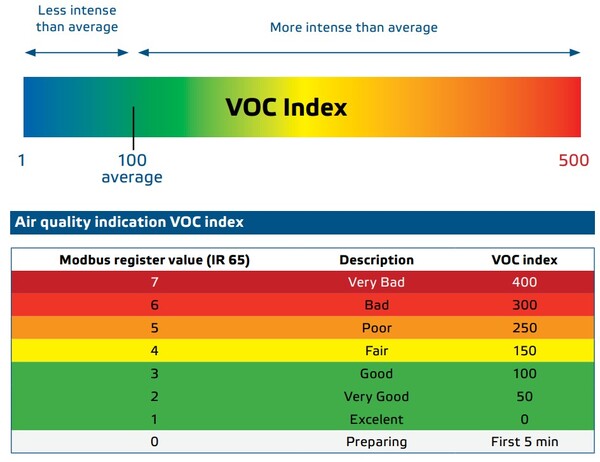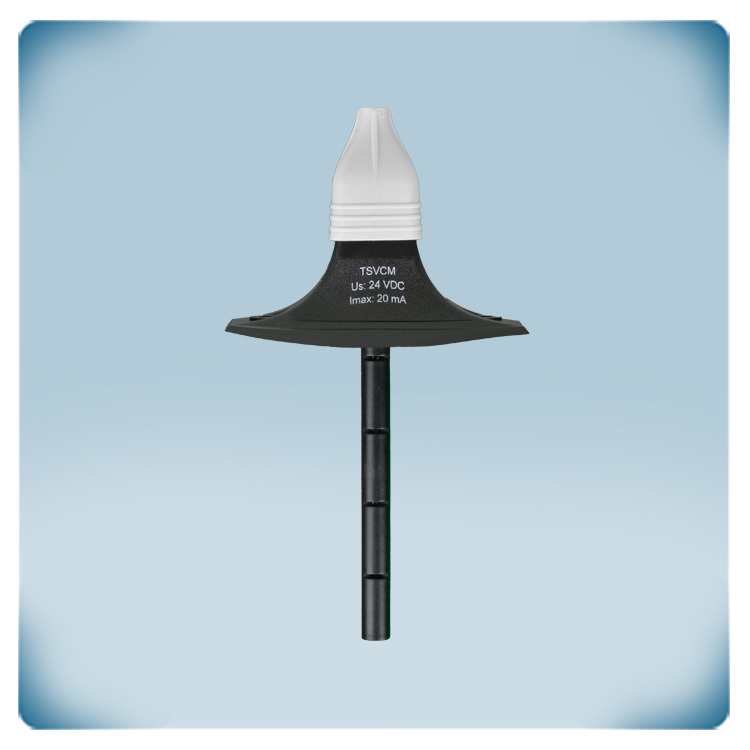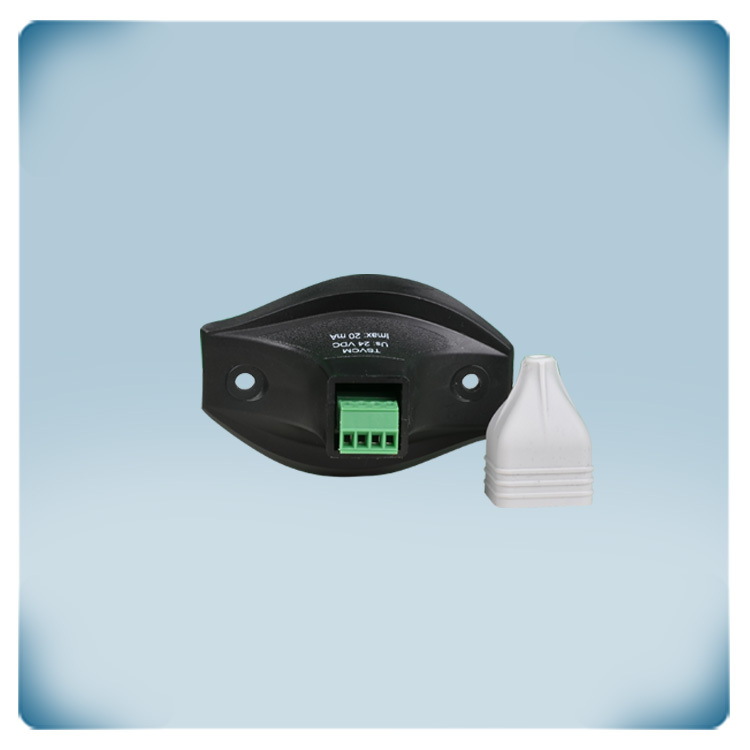EU declaration conformity
Duct TVOC sensor | 24 V DC
Product description
This duct air quality sensor measures temperature, relative humidity, and VOCs (Volatile Organic Compounds).
It operates on a 24 V DC supply with a maximum input current of 20 mA. Measured values are transmitted via Modbus RTU, as the sensor has no analog outputs.
All settings can be configured using Modbus RTU communication.
The sensor connects via a pluggable screw terminal block and functions within an operating temperature range of -10 to 50 °C.
Documents
Additional specifications and description
What is VOC index and Why is it Important?

TVOC stands for Total Volatile Organic Compounds. The VOC index provides an overview of the total amount of VOCs in the air. VOCs are chemicals that can easily turn into gases and are often found in everyday items like cleaning products, paints, varnishes, and even some building materials and furniture. They are also produced by humans and animals. The most common compounds are benzene, ethylene glycol, formaldehyde, methylene chloride, tetrachloroethylene, toluene, xylene, and 1,3-butadiene.
The VOC index is a smart, adaptive indicator that reflects trends in indoor air pollution from VOCs, similar to how the human nose perceives odors. The value of 100 refers to the average indoor gas composition over the past 24 hours. While values between 100 and 500 indicate a deterioration, values between 1 and 100 inform about improvement of the VOC based air quality. The index continuously adapts to its environment and helps to detect air quality deterioration or recovery over time.
Monitoring TVOC levels is important because some VOCs can be harmful to our health, especially when they accumulate indoors. Breathing in high levels of certain VOCs over a long time can lead to health issues like headaches, dizziness, irritation of the eyes, nose, and throat, and in some cases, they might even cause more serious health problems. By measuring TVOC levels, we can keep track of how much of these chemicals are present in the air inside our homes or workplaces. Monitoring and controlling these levels help us ensure healthier indoor air quality and reduce potential health risks associated with exposure to VOCs.
How to install this duct VOC Sensor?
This compact VOC sensor is optimised for monitoring indoor air quality in air ducts. It features a plastic sensing probe with a length of 142,2 mm. The sensor works best, if it is installed in a straight section of the air duct. Avoid installing in turbulent air zones near filters, fans, cooling coils, and so on. Position the sensor correctly in relation to the airflow direction. More detailed information can be found in the mounting instructions which can be downloaded on top of this page.
This sensor requires very little configuration thanks to the optimised default settings. It is almost directly usable once it has been installed.
What does this VOC sensor measures?
This duct sensor measures temperature and relative humidity. It also monitors the trend of the indoor air quality (VOC index). This trend sensor can be used to control the fan speed of the ventilation system. When the VOC index shows a downward trend, fan speed can be reduced. In case of an upward trend, more fresh air supply is required to wash away the pollutants.
How Do the Sensor's Modbus Connection and Data Access Work?
This sensor is connected via pluggable terminal block. All parameters and configuration settings can be accessed through the Modbus protocol via an RS-485 interface. All measured values are available via the Modbus input registers of this sensor. This sensor has no (analogue) outputs! Reading the measured values is possible via SenteraWeb - our online HVAC platform, via a BMS system or via another Modbus master device. Modbus is a digital communication and has numerous advantages. The most important ones are that digital signals are less susceptible to interference than analogue signals and that longer cables can be used.
What Are the Sensor's Wiring and Power Supply Requirements?
This VOC sensor operates on a 24 Volt DC supply voltage and has a maximum current consumption of 20 mA. It connects via a pluggable screw terminal block. The terminal block has connection points for both the supply voltage (V+ and GND) and the Modbus RTU communication (A and /B). Both can be connected via a 4-wire cable (Cat5 or EIB cable).
What Are the Sensor's Calibration, Durability, and Protection Standards?
Each sensor is calibrated and tested in our factory. We use sensor elements and components of high quality. This ensures the long-term stability and accuracy of this TVOC Sensor. The enclosure offers an IP20 protection degree against ingress of dust and moisture. The device should only be used indoor. To ensure optimal performance, it should be protected from direct sunlight.
Each sensor is calibrated and tested in our factory. We use sensor elements and components of high quality. This ensures the long-term stability and accuracy of this TVOC Sensor. The enclosure offers an IP20 protection degree against ingress of dust and moisture. The device should only be used indoor. To ensure optimal performance, it should be protected from direct sunlight.



.webp)
.webp)
Remarks, reviews & ratings